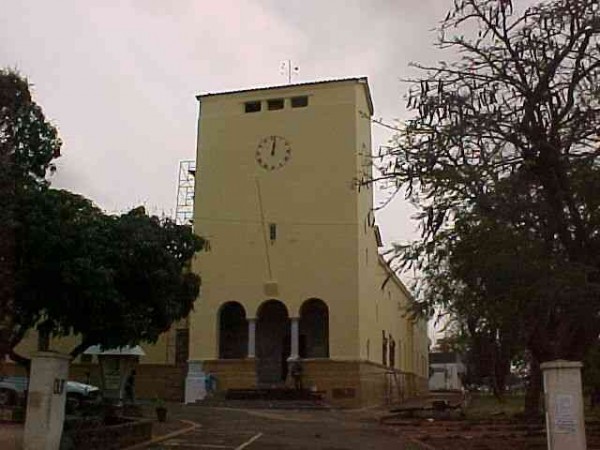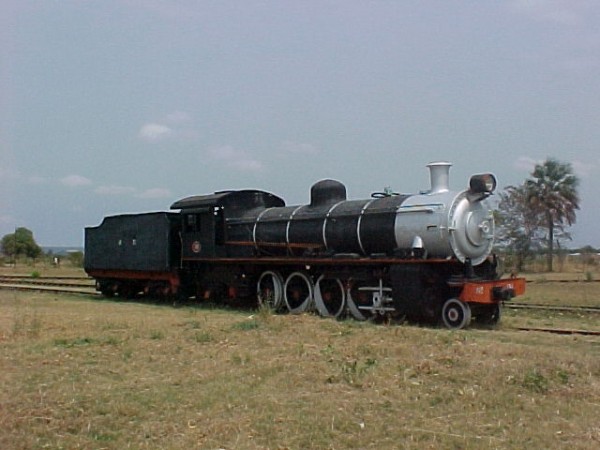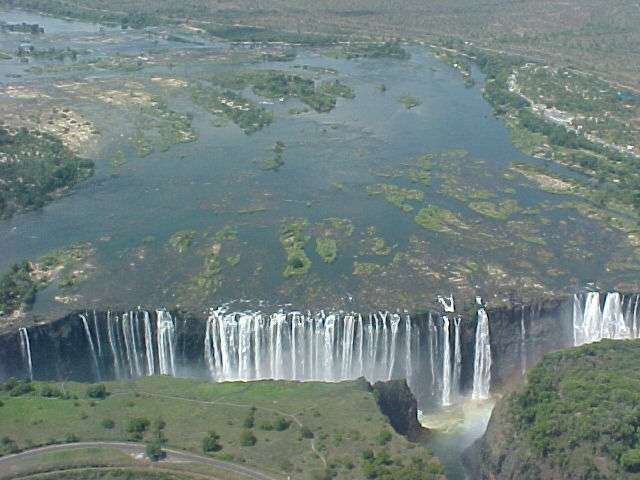Light at the end of the Tunnel
Many Livingstone tourist businesses have relied on ‘borrowing’ clients from Victoria Falls Town, Zimbabwe. Some businesses actually advertised themselves on the Zimbabwe page in the Getaway magazine in order to get clients to come to Zambia. Now, of course, all that has changed. There are very few tourists in Vic Falls Town and Zimbabwe is bad news to most tourists. Livingstone now has to stand alone and it is struggling. But, in the long run, it will be good for Livingstone.
Philip Couvaras of Sun International is very concerned about how Zambia, and Livingstone in particular, markets itself. He says that Zambia should not only portray itself with pictures of the lone canoeist or a mud hut. Zambia is much more special than that. At recent Travel shows in the region the Zambia stands have been busy and this proves that tourism in Zambia has a bright future as long as businesses can come up with the right product.
Here in Livingstone, the runway at the airport has been resurfaced and can now take international flights again. There are plans to revamp the airport buildings too – they have already been given a coat of paint. The Livingstone Council has been adamant that all shops in town clean up their premises before they can be given a Trading Licence – and it has worked. Livingstone has a fresh look about it and we are beginning to feel proud of our town. Once Sun International is operating the hotel, there will be plenty of much-needed quality accommodation for visitors and Sun is marketing Livingstone as a top destination. So, although there is little business in town there is lots of optimism for the future. And that is not all …
The Livingstone Museum
J Desmond Clark, Professor Emeritus of Paleaoarchaeology at the University of California, Berkeley, was the Director of the Livingstone Museum from 1937 to 1961. In April he was sent a newspaper cutting from a British newspaper which described the heavy rains and the subsequent roof collapse at the Livingstone Museum. He was obviously very concerned and alerted the International Federation of Library Associations. Through his investigations, it was found out that the European Union had appropriated US$200,000 for the Livingstone Museum. There are now emails flying all over the world as the International community tries to have this money made available quickly, to be used for the repairs and upgrading of the museum. It is reported that the money is already here and that the Zambian Government is about to sign the deal. Vincent Katanekwa, the Director of the Livingstone Museum, is very happy about the funding and hopes that it will get to the museum before the next rainy season. The library has been moved to the ground floor and the books are not in danger of being damaged but so much space is unusable as they wait for the next rains to come.
Railway Museum
Another much-needed sponsorship for Livingstone is from NORAD who are assisting in the development of the National Heritage Conservation Commission. Funding which is due to arrive shortly will go to the Railway Museum which is in desperate need of repair. The Railway Museum is housed in the old Zambezi Sawmills Loco Sheds. The buildings are made of timber and some of the walls are about to collapse.
Mukuni Park
We are lucky in Livingstone to have the headquarters of the National Heritage Commission. They work tirelessly to protect Zambia’s heritage and they keep a special eye on Livingstone. Donald Chikumbi, the Director for the Southwest Region, has taken a keen interest on Livingstone’s Mukuni Park which has recently been sold by the Council to Stocks & Stocks for the development of a Shopping Complex (similar to Manda Hill). In a letter to Stocks & Stocks, Donald has pointed out to them that Mukuni Park is a heritage site and is thus protected by law. He states that Mukuni Park is the only protected historical garden in Zambia. Stocks & Stocks are therefore required to seek permission from the Commission for any planned development. National Heritage is very much against the development of the Park. Donald says that it is an integral part of Livingstone’s history. The first commercial and residential plots in Livingstone surrounded the Park (then called Barotse Centre) and were sold in 1905. He says that when the British South Africa Company planned the original Livingstone centre they understood the need for green areas in the township. The Barotse Centre was a place to walk, a place to meet friends, a place where children could play and it added beauty to the centre of the town. He feels that we must not destroy the historical aspect of Livingstone and that there is plenty of space available in Livingstone for modern developments of this kind.
Livingstone Festival of Light
Remember the Livingstone Festival of Lightwhich takes place from Friday 25 to Sunday 27 August.



Leave a Reply
You must be logged in to post a comment.